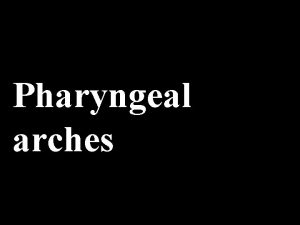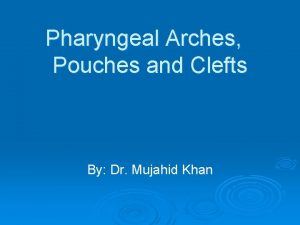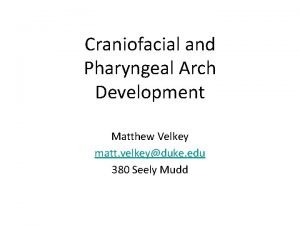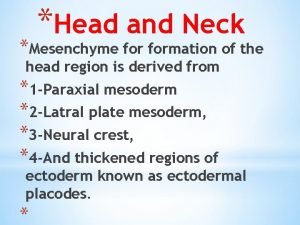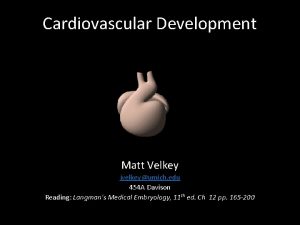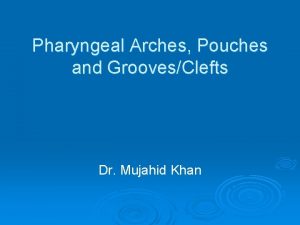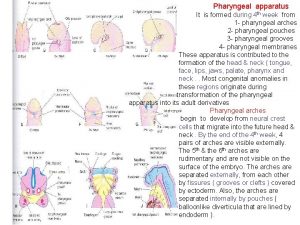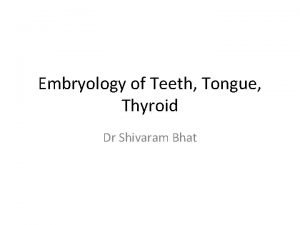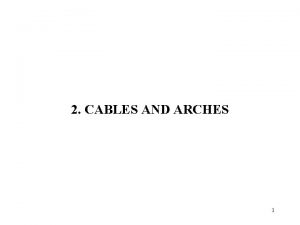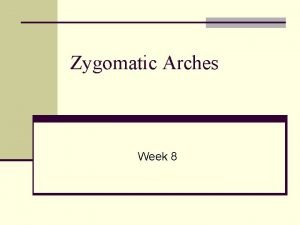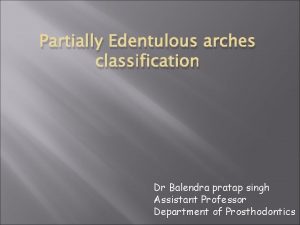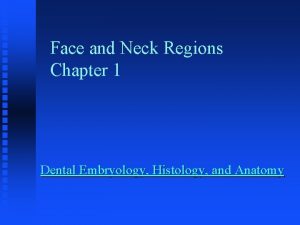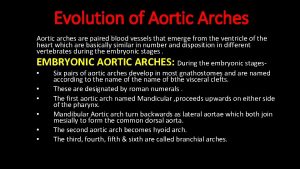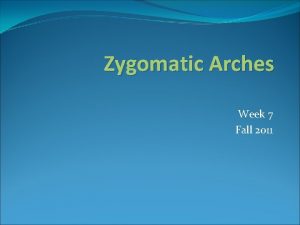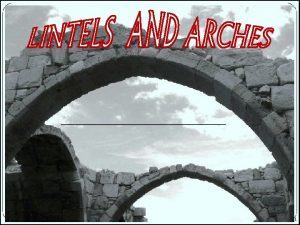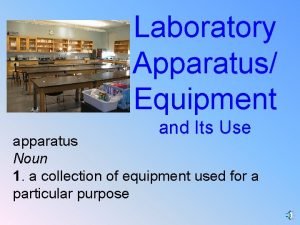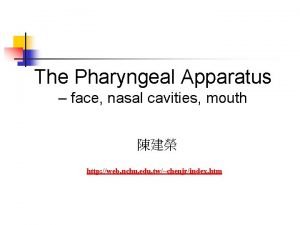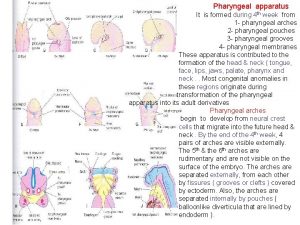Development of pharyngeal apparatus pharyngeal arches and its


















- Slides: 18

Development of pharyngeal apparatus: pharyngeal arches and its derivatives Dr. Nandor Nagy Semmelweis University

Pharyngeal (or branchial) arches form in craniocaudal sequence during 4 th to 5 th weeks Structures in embryonic pharyngeal arches reorganize to form cartilages, nerve, muscles & arteries in fetus

In humans, five pairs of pharyngeal arches form on either side of the pharyngeal foregut, starting on day 22. Each arch has an outer covering of ectoderm, an inner covering of endoderm, and a core of mesenchyme derived from paraxial and lateral plate mesoderm and neural crest cellderived ectomesenchyme.

Pharyngeal pharyngeal

Neural crest derived mesenchyme fill the pharyngeal arches

The HOX and Dlx code provides spatial identity to crest cells colonizing pharyngeal arches.


6

Muscles of arches

6 5) Sixth Arch

Recurrent laryngeal nerve and

-The 1 st pharyngeal cleft forms the external auditory meatus. -The second pharyngeal arch expands and fuses with the cardiac eminence to cover the remaining pharyngeal clefts.

Brachial pouches: outpocketings of pharynx endoderm E. Pouch 5: C-cells (produce calcitonin)


***trapezius and sternocleidomastoid muscles arise from the caudal 6 th pharyngeal arch, and these muscles receive motor innervation via the XI Cranial Nerve(Spinal Accessory Nerve)

Abnormal development of pharyngeal arches -aplasia of thymus and parathyroid gland -TBx 1 ----FGF 8 1: 3 -4000

The pharyngeal pouches contain the primordia of a number of different adult structures

Tongue development Lingual musculature stems from muscle cells that immigrate from the occipital somites into the tongue. The emigrating predecessor cells follow the hypoglossal nerve (CN 12). Innervation of the tongue Sensitivity: (touch) Anterior two-thirds of the tongue 1. Pharyngeal arch Posterior third of the tongue 3. Pharyngeal arch N. lingualis (CN V 3) N. glossopharyngeus (CN IX) Tongue base 4. Pharyngeal arch Sensorial: (taste) Anterior two-thirds of the tongue 2. Pharyngeal arch Posterior third of the tongue 3. Pharyngeal arch N. vagus (CN X) Chorda tympani (CN VII) N. glossopharyngeus (CN IX) 4. Pharyngeal arch Motor: (movement) Entire musculature 6. Pharyngeal arch N. vagus (CN X) N. hypoglossus (CN XII)
 Cleft and pouch
Cleft and pouch Parathyroid gland pharyngeal pouch
Parathyroid gland pharyngeal pouch Structures derived from pharyngeal arches
Structures derived from pharyngeal arches Faríngea
Faríngea Tuberculum impar
Tuberculum impar Sinus venosus
Sinus venosus Tubotympanic recess
Tubotympanic recess Pharyngeal arches
Pharyngeal arches Hypobranchial eminence
Hypobranchial eminence Arches
Arches Cables and arches
Cables and arches Weathering and erosion jeopardy
Weathering and erosion jeopardy Caves arches stacks and stumps diagram
Caves arches stacks and stumps diagram I comb its hair and love its shining eyes
I comb its hair and love its shining eyes Its halloween its halloween the moon is full and bright
Its halloween its halloween the moon is full and bright Zygomatic arch view positioning
Zygomatic arch view positioning Which features of the sun look like huge cloudlike arches?
Which features of the sun look like huge cloudlike arches? Kennedy class 4 mod 2
Kennedy class 4 mod 2 Palatine fovea
Palatine fovea
